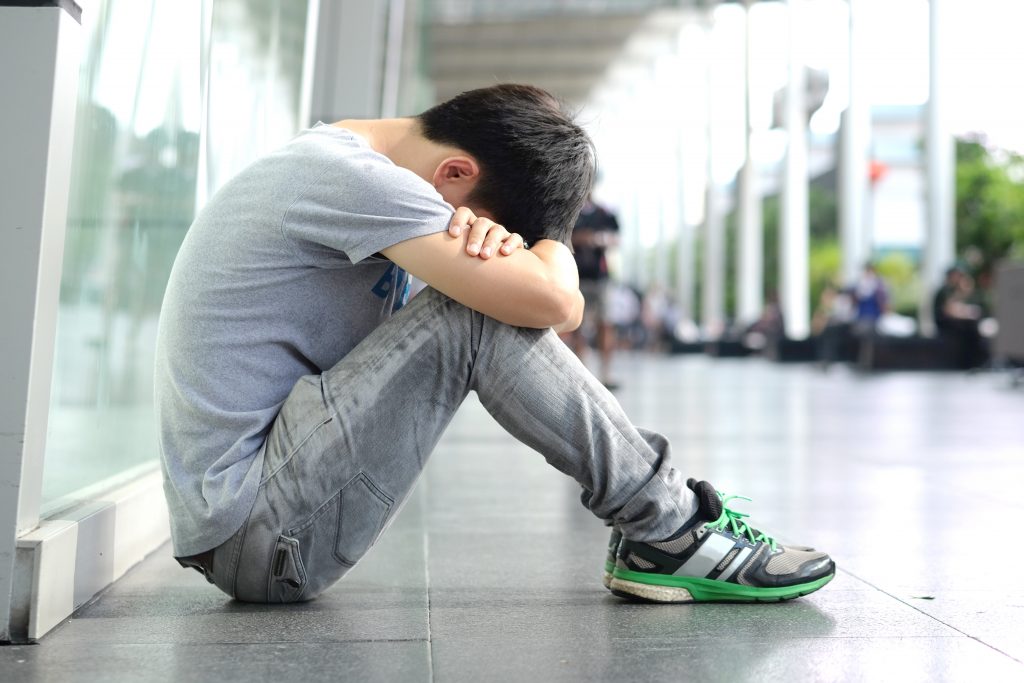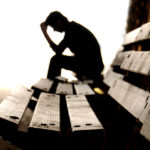July 13, 2021
What is Bipolar Disorder?
You may be asking yourself, what is bipolar disorder? Bipolar disorder is considered a mood disorder and is a diagnosable (and treatable) mental health condition. Bipolar disorder or manic-depressive disorder, includes three different types: bipolar I, bipolar II, and cyclothymic disorder.
This is a disorder that is chronic, debilitating, and relapsing with familial connotations. There are recurrent episodes of depressive and or manic symptoms impacting the quality of life and functioning of the client/patient.
Bipolar Disorder Symptoms
One of the distinctive features of bipolar disorder is the experience of mood swings. Experiencing moments of intense energy (referred to as mania) and times of low mood and low energy (referred to as depressive episodes) remains typical with bipolar disorder. Additionally, the mood changes are considered episodes.
Symptoms of a manic episode can include:
- High energy
- Feeling “jumpy” or on edge
- Decreased appetite
- Lessened need for sleep
- Rapid speech
- Racing thoughts
- Feeling that you can take on many tasks at one time
- Engaging in risky behaviors such as risky sexual behaviors and eating/drinking too much
- Poor judgment such as spending or giving away money
- Feeling inappropriately powerful, significant, and talented
Symptoms of a depressive episode can include:
- Irritability
- Talking slowly
- Increase in appetite and weight gain
- Difficulty falling or staying asleep or sleeping too much
- Feeling sad, down, and low energy
- Feelings of hopelessness
- Lack of interest in previously enjoyable activities
People with bipolar disorder, more often than not, present in their depressive phase with sadness, loss of motivation, overwhelmed feeling, inability to feel pleasure, sleep issues and attentional/focus issues. If a thorough assessment is not conducted, treatment could be initiated that could trigger mania in these individuals.
As previously mentioned, three different types of bipolar disorder exist. While they have some commonalities, there are distinct differences among the three. For individuals who don’t meet specific criteria for bipolar I, bipolar II, and cyclothymic disorder, the diagnosis may be “other specific and unspecific bipolar related disorder”.
Bipolar I Disorder
Bipolar I disorder is considered the most severe form of bipolar disorder. With bipolar I, a person:
- Experiences manic episodes for at least seven days.
- Experiences depressive episodes that last for at least two weeks.
- Can experience episodes of mania and depression at the same time.
- Can experience psychosis such as seeing/hearing things that aren’t there (hallucinations) or believing a reality that doesn’t exist (delusions).
Bipolar I and II are the most common types of bipolar.
Bipolar II Disorder
Bipolar II disorder symptoms are less severe than bipolar I symptoms. A person with bipolar II disorder:
- Experiences hypomanic episodes which are similar to manic episodes; however, the energy and intensity aren’t as severe as mania.
- Experiences depressive episodes that are less intense in severity than bipolar I depression.
- Usually doesn’t experience psychosis; however, it is possible.
Cyclothymic Disorder
Cyclothymic disorder symptoms are the least severe of the three and a person with this disorder:
- Experiences hypomania and depression for at least two years as an adult or one year as a child or adolescent.
- Experiences periods of depression and hypomania but not to the extent of bipolar I and bipolar II mania and depression.
Testing for Bipolar Disorder
Bipolar disorder usually gets diagnosed by a mental health professional. That includes psychiatrists, psychologists, counselors, and social workers. A mental health counselor can conduct an evaluation—and based on your presenting symptoms, medical history, and family history of mental health disorders—can rule out or diagnose the presence of bipolar disorder.
There is no objective test to diagnose this disorder. Diagnosis is obtained by conducting a thorough and comprehensive assessment of the client, some assessment tools are used to aid in diagnosis including MDQ (mood disorder questionnaire, General Behavior Inventory (GBI).
Usually, your doctor may run tests to rule out any physical cause for your presenting symptoms.
What Causes Bipolar Disorder and is it Genetic?
Researchers are attempting to understand the elements that contribute to the development and existence of bipolar disorder. Most researchers agree that there is not one single cause–but several factors that interact. Genetics can contribute to the development of bipolar disorders. Studies show that people who have a parent or sibling with bipolar disorder remain more likely to be diagnosed with bipolar themselves.
There are some genetic connotations to the disorder as people with certain genes (CACNA1C) are more likely to develop this disorder. However, the exact gene(s) responsible for bipolar disorder are unknown.
Another variable that researchers are uncovering is differences in brain structure and brain chemistry. Some research studies indicate that brains in individuals with bipolar disorder are different than individuals who do not have the disease. Your environment can also play a role in the development of bipolar disorder.
If there is significant family history of bipolar disorder, it will be prudent to get checked as early as possible as family history is the most consistent risk factor for this disorder.
How Common is Bipolar Disorder?
Bipolar disorder is not as common as other mental health disorders such as anxiety and depression. As of 2017, approximately 2.8% of adults 18 and over in the United States were diagnosed with bipolar disorder, and approximately 4.4% of adults in America will experience bipolar disorder at some point in their lives.
The average age of a person when they experience symptoms of bipolar disorder is 25 years old, and the prevalence of bipolar disorder in men and women is fairly the same. Additionally, the majority of people diagnosed with bipolar disorder are considered severe. In fact, 83% of people in the United States who are diagnosed with bipolar disorder are considered severe.
Also according to the DSM-5, bipolar disorder is more common in high income countries than in low income countries. There is a higher rate of bipolar disorder in clients that are divorced or separated than those that are married.
Treatment for Bipolar Disorder
Bipolar disorder is considered a chronic disorder which means that the condition lasts for a long time. You can treat bipolar disorder using various approaches, including medication, therapy, support groups, and behavioral change strategies.
Mood stabilizers and atypical antipsychotics are the preferred medications for bipolar disorder. An effective treatment plan is a combination of pharmacotherapy and psychotherapy.
The treatment plan for each person gets individualized based on their presenting problems, history, and treatment plan goals. There is not a one size fits all approach to treating bipolar disorder.
Medications for Treating Bipolar Disorder
Medication often gets used to treat bipolar disorder. For many people, trying different medications is common. Additionally, some people may need to take more than one medication to treat their symptoms of bipolar disorder. Mood stabilizers and antipsychotics remain common approaches to treat bipolar disorder in tandem with medication that addresses anxiety and sleep issues.
Some common FDA approved medications used to treat bipolar disorder include:
- Lithium
- Abilify
- Latuda
- Zyprexa
- Seroquel
- Risperdal
- Geodon
- Lamictal
- Depakote
It is important to remember that side effects can occur with the use of medication. Make sure to talk to your doctor if you notice any side effects from the medication you are taking. Your doctor can work with you to reduce your risk of side effects and make necessary changes to your medication regime.
How to Help Someone with Bipolar Disorder
 If you think a loved one may be experiencing symptoms of bipolar disorder, let them know you are there to listen without judgment and that treating bipolar disorder is possible. You can also encourage them to reach out to their doctor for further support and information on evaluation and treatment options.
If you think a loved one may be experiencing symptoms of bipolar disorder, let them know you are there to listen without judgment and that treating bipolar disorder is possible. You can also encourage them to reach out to their doctor for further support and information on evaluation and treatment options.
SAMHSA (substance abuse and mental health services administration) has a comprehensive resource to help families whose loved ones suffer from bipolar disorder. It provides ways to help a loved one including supporting participation in treatment, being extra patient, and paying attention when a loved one is manic or depressed. Also working with the loved one to create a plan that supports them when things are not working well including a suicide safety plan and advance directive.
If you think you may have symptoms of bipolar disorder, talk to your doctor about your symptoms. Your doctor can administer an evaluation to rule out any physical cause of your symptoms and provide you with a referral to a mental health professional for further evaluation.
DISCLAIMER
The information featured in this site is general in nature. The site provides health information designed to complement your personal health management. It does not provide medical advice or health services and is not meant to replace professional advice or imply coverage of specific clinical services or products. The inclusion of links to other web sites does not imply any endorsement of the material on such websites.


